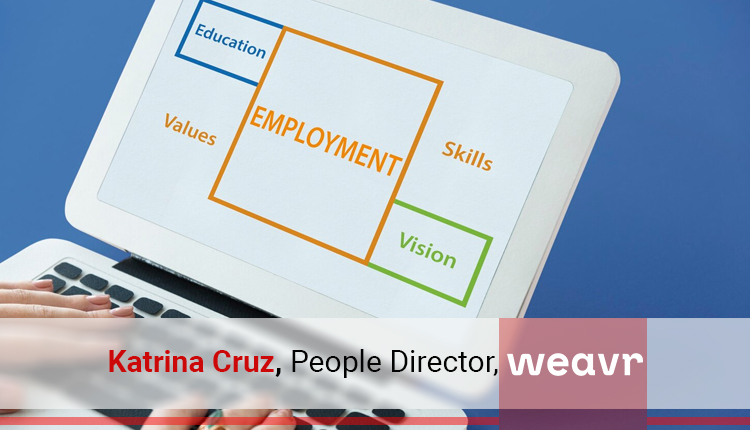With economic pressures, employee empowerment and turnover both at all-time highs, benefit managers find themselves in a difficult position when attempting to find a way to make benefits meaningful on an individual level. However, and luckily for benefit managers, with advances in HR tech, there are new tools at their disposal in the form of spendable benefits cards made possible by embedded finance. And they might just be the solution.
INCREASED FLEXIBILITY WITH EMBEDDED FINANCE
Benefit managers fight an uphill battle. With many employees not taking advantage of the benefits available to them – whether because they are unaware or because they are not of interest or relevance to them – an overall lack of engagement can signal wider company culture issues. Failing to successfully engage employees with the benefits offered can harm a company’s overall performance. Hence, benefit managers are constantly searching for solutions that improve the return of investment on their programmes.
One emerging winner is the addition of payment cards to HR tech platforms in order to make flexible benefits spendable. While employers can go to their bank or various fintechs to set up payment cards programmes, the idea of pre-set access within the HR platform they already use is the killer feature made possible by embedded finance. Spend control systems offer benefits managers the ability to set benefits rules and budgets for employees that make existing allowances such as health and fitness more flexible and fair, and open up possibilities for a huge range of new benefits ideas such as wellness, learning, and work-from-home allowances. Because employees gain the freedom to pick the benefits they value most, a centralised system can achieve almost total personalisation – should the company opt for this. That degree of choice is key to accelerating adoption of benefits.
Read More on Hrtech : HRTech Interview with Kristin Cabot, Chief People Officer at Astronomer
OVERCOMING THE BENEFITS BATTLE
Embedded finance providers integrate regulated financial services – accessed via payment cards and digital wallets – into the user experience of non-fintech software. In this instance, HR software, including more dedicated employee benefits platforms, can embed budget features and card payments to inject a huge degree of flexibility and relevance into benefits schemes.
Previously, benefits managers have lacked the tools to sufficiently customise the package they would like to provide in a way that suits a diverse range of individuals within the business. Often, they’re limited to certain gym memberships or private healthcare packages that simply do not cater to their diverse employee needs and wants. Benefits are constrained to a limited range of specific suppliers. However, even before tackling the distribution and launch of tailored benefits, for 80% of benefit managers, the issue is exacerbated by the quantity of employees working outside of the business’ HQ country, which can make some benefits null and void.
Assigning employees a budget and set guardrails upfront to limit spend to specific merchant categories becomes part of a much more efficient setup, which, in the long term, makes the benefits programme much more viable. As a consequence, embedded finance solves the issues around viability, enabling benefits managers to spend more time on thoroughly understanding local jurisdictions relating to benefits distribution in each country in which they hire. They can be more strategically informed on how tailored, universal, and scalable their benefits rollout will be. Succeeding in knowing how aligned the benefits programme is, and then ensuring their HR tech platform has the tools to enable spendable and curated benefits, ensures the long-term sponsorship of this managers’ benefits programme.
THE SPENDABLE ALTERNATIVE
Spendable benefits cards offer additional freedom of choice. Employees might choose to spend their benefit allowance on equipment for their home office, membership of a local or nationwide chain of yoga studios, or even private insurance plans – all of them can be viable options for benefits. Benefit cards are like any other payment card employees already use, and can be integrated with Apple or Google mobile wallets.
Automatic checks are made at each point of transaction to ensure that the employee purchase fits into pre-defined categories set by benefit managers. Plus, the tight integration between the SaaS platform and the API-based payment systems means a greatly improved quality of data available around the benefits employees consume, and ultimately find most valuable.
By crafting benefits packages that are more personalised and localised, employees take up more of what’s on offer, increasing benefit adoption. Increased adoption of these benefits helps HR managers attract and retain talent within the company and so sets off a positive cyclical relationship between the HR or benefit manager, employee, SaaS provider and embedded finance provider due to the increased success of benefits programmes.
Weavr.io’s research demonstrated strong demand for spendable benefits cards, with 60% of benefit managers indicating that they would value benefits software that offers them.
AN ALIGNED STRATEGY
Prior Weavr research released this year highlighted that 72% of SaaS product managers were planning to embark on an embedded finance project. This is a strong signal of innovation to come in the HRtech market, in the form of the designing for congruence: the embedding of payments in HRtech propositions.
By leveraging spend cards to enhance employee engagement with benefits, HRtech platforms can not only solidify their competitive edge but also unlock new revenue streams. These financial transactions create monetisation opportunities, such as per-card transaction fees or premium subscription tiers that include advanced financial functionalities.
For the users of HRtech – benefits managers – the most significant impact of spend cards lies in their ability to drive employee satisfaction and improve the overall effectiveness of a company’s benefits programme—ultimately boosting key business KPIs. After all, positively engaged employees are the cornerstone of business success.
Catch more HRTech Insights: HRTech Interview with Ramesh Ramani, CEO and President at ExpertusONE
[To share your insights with us, please write to psen@itechseries.com ]

